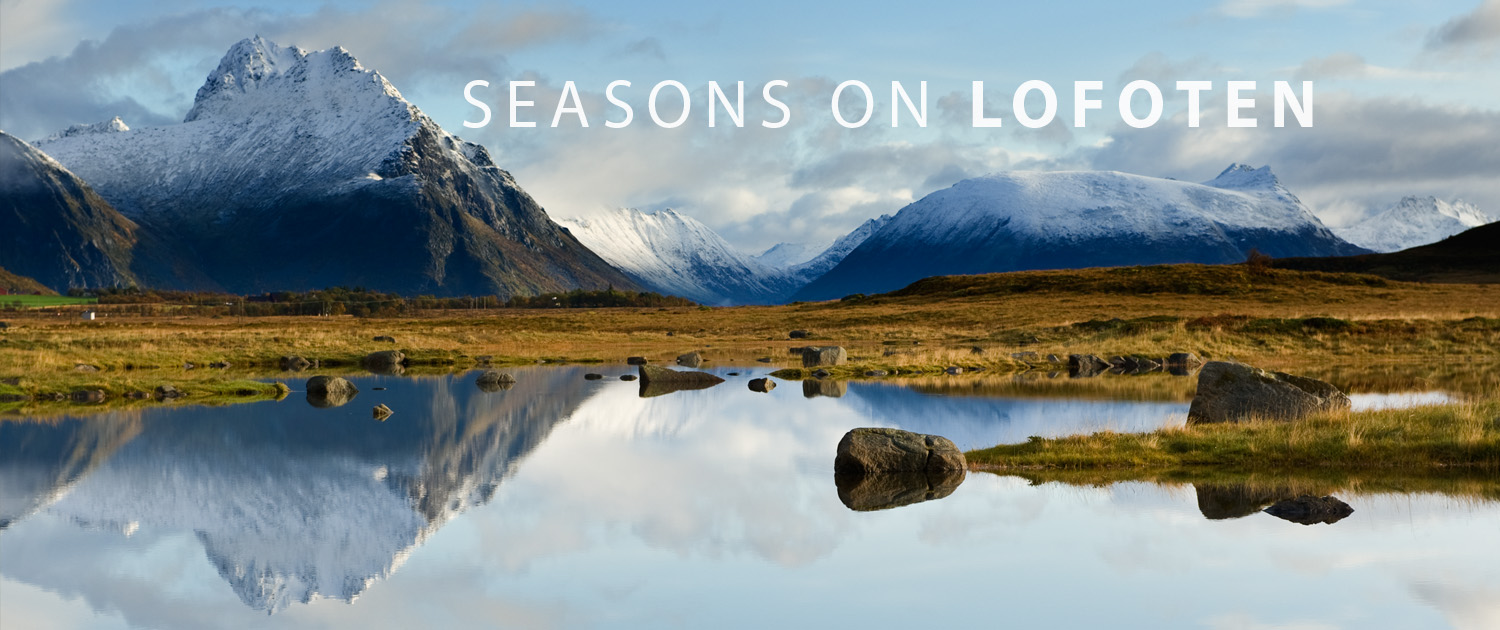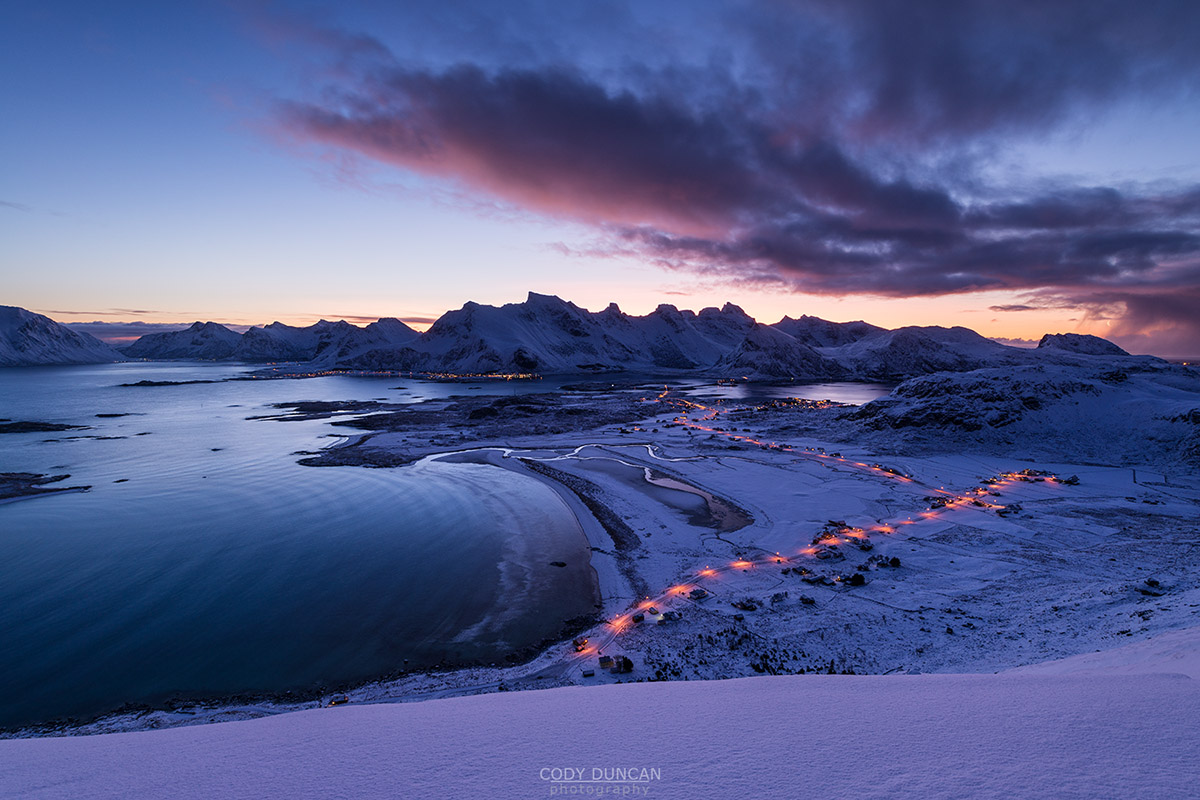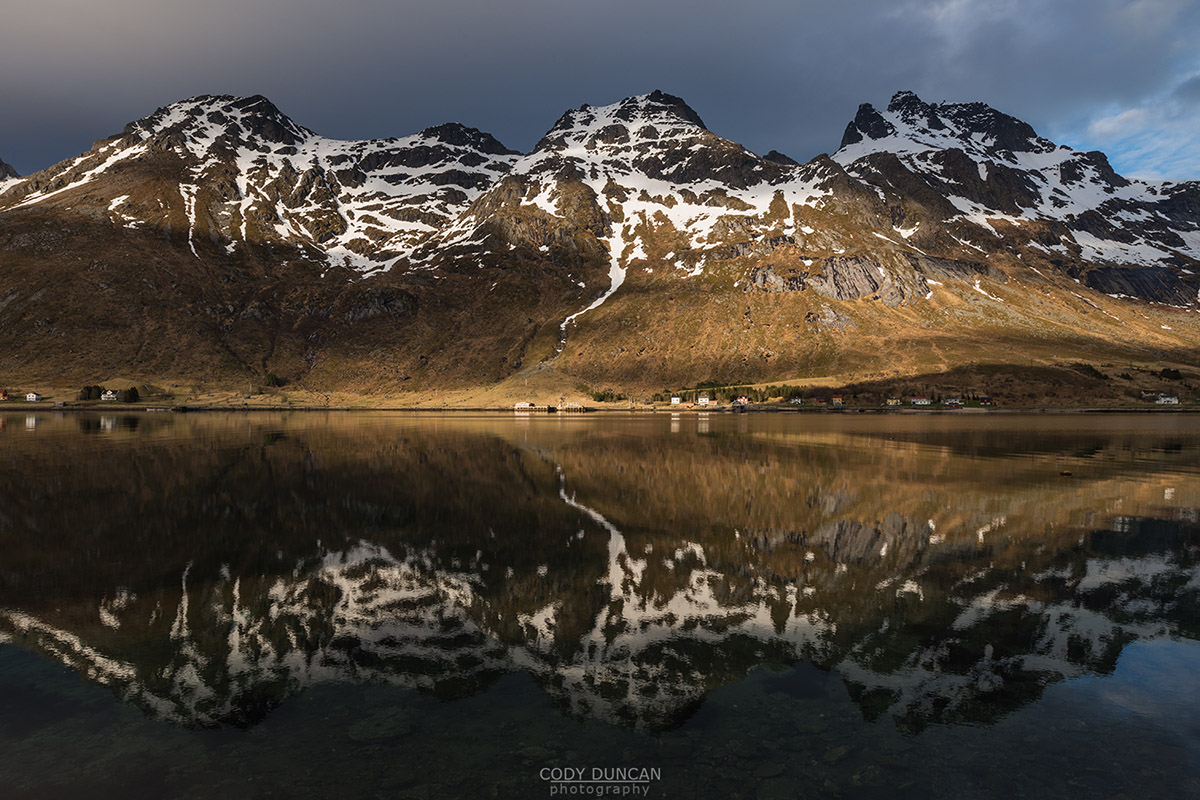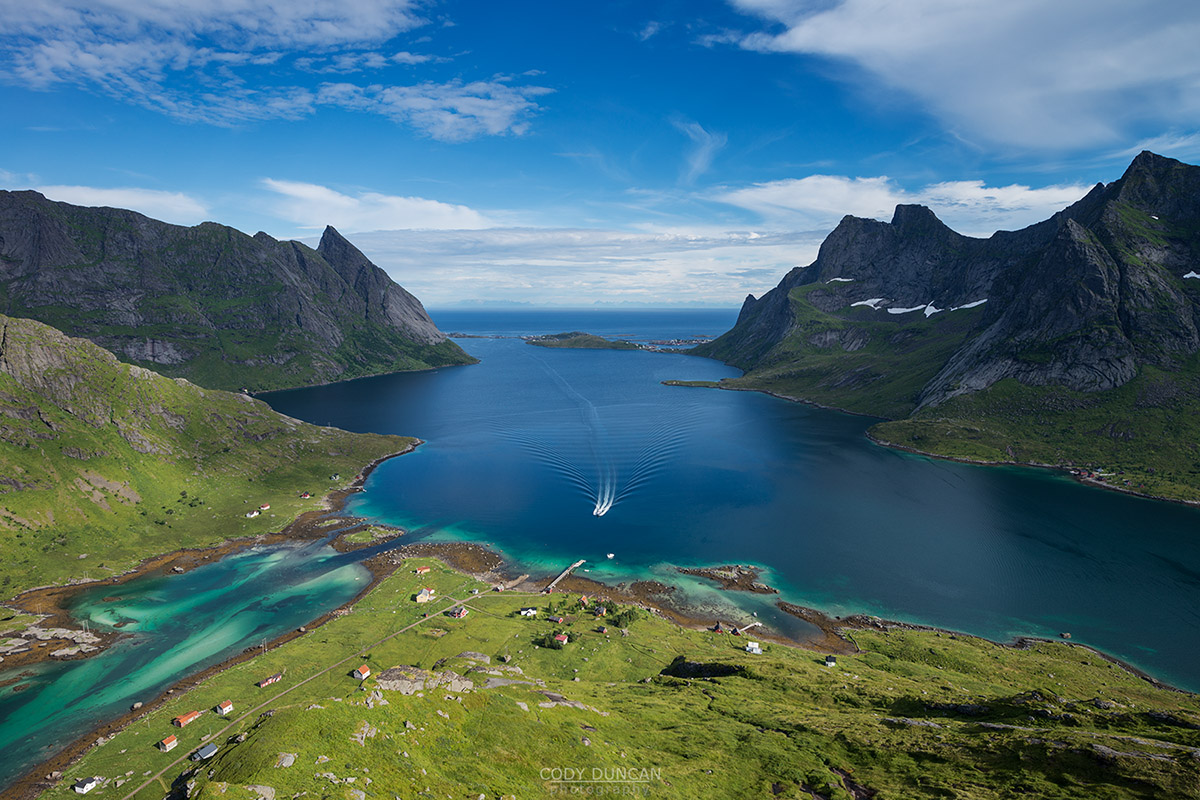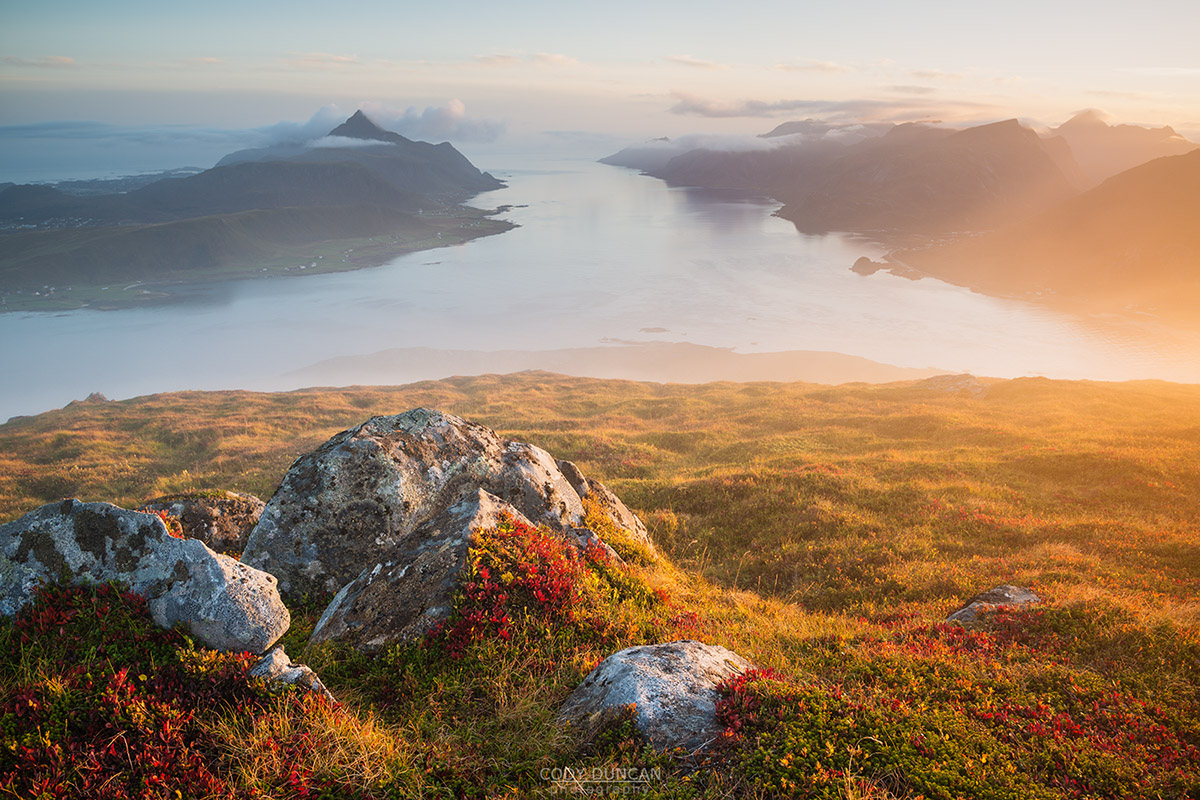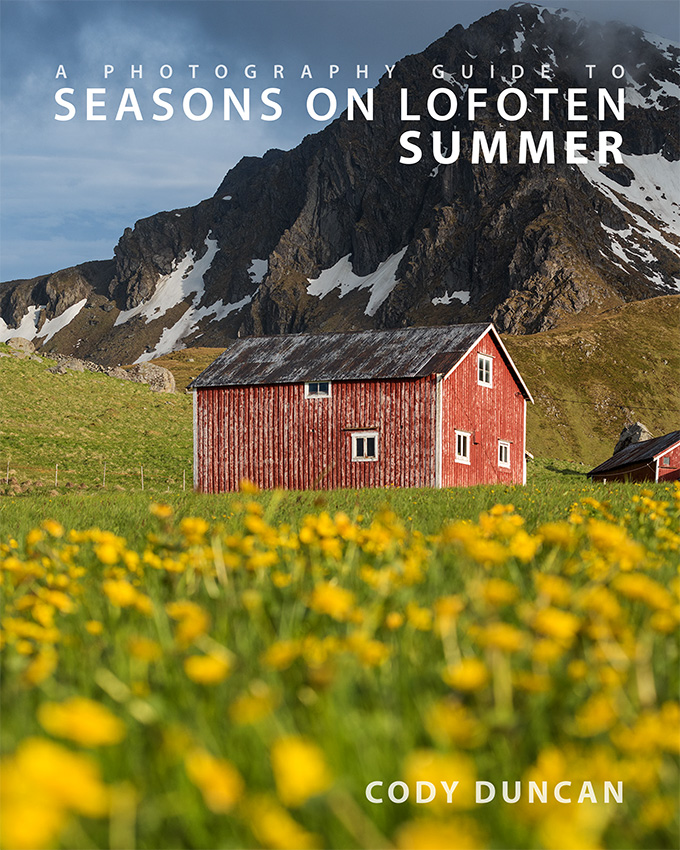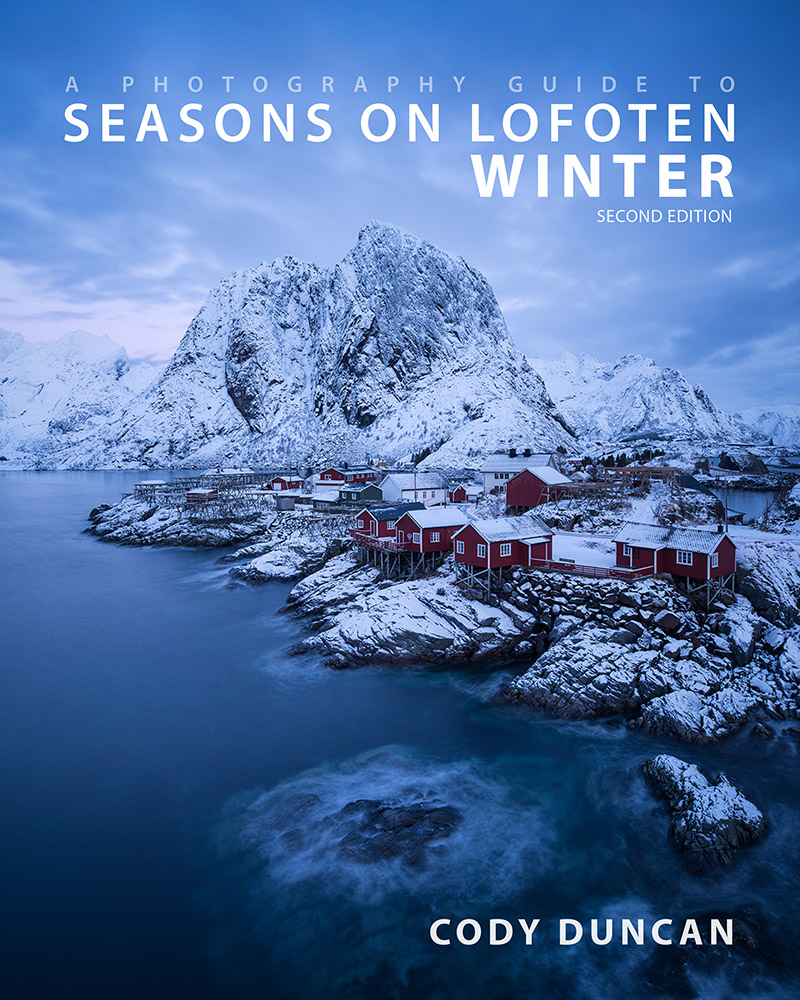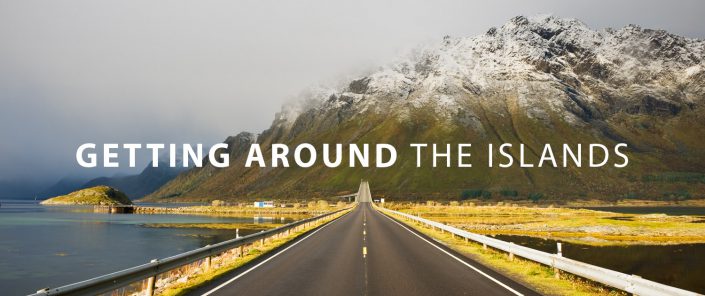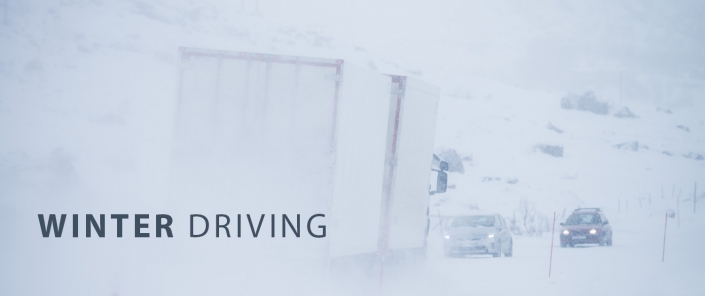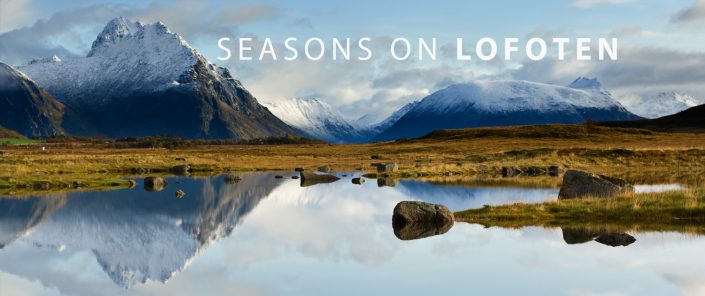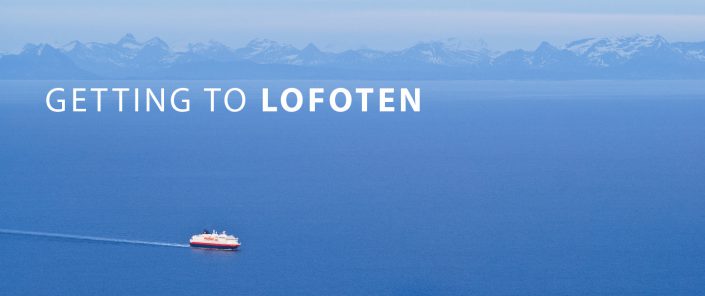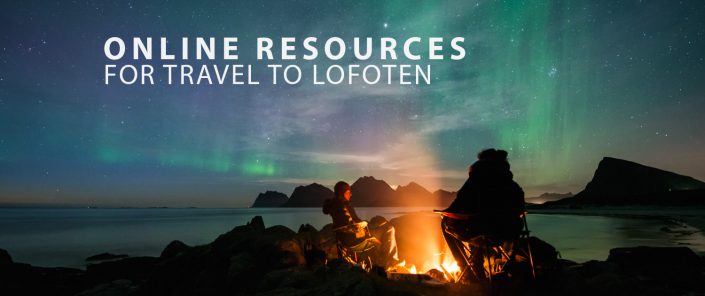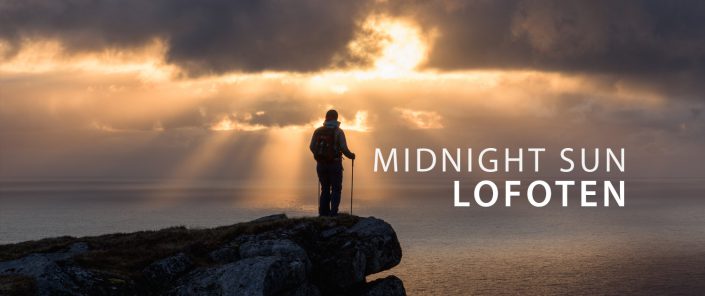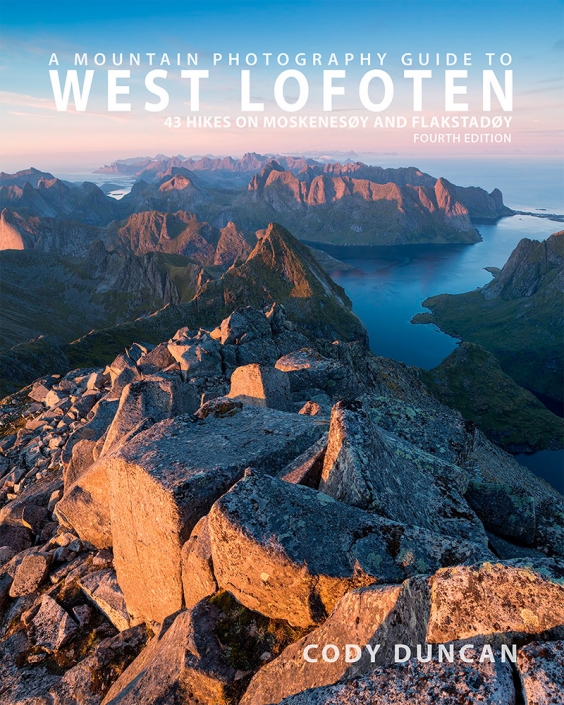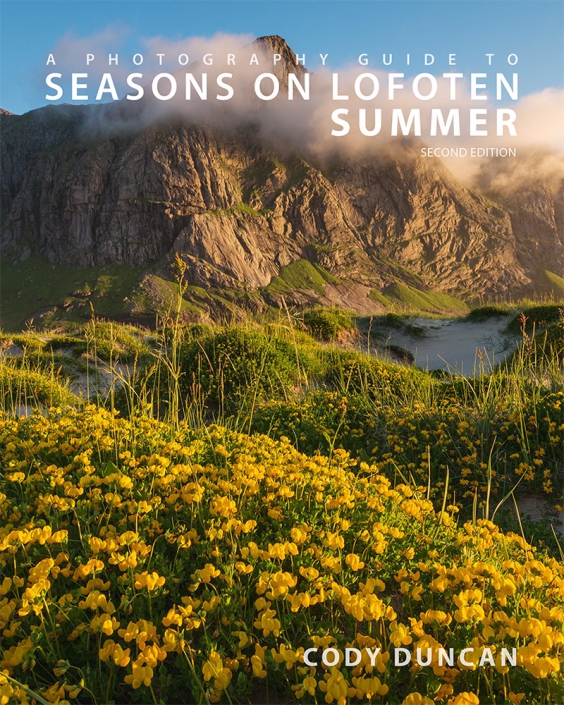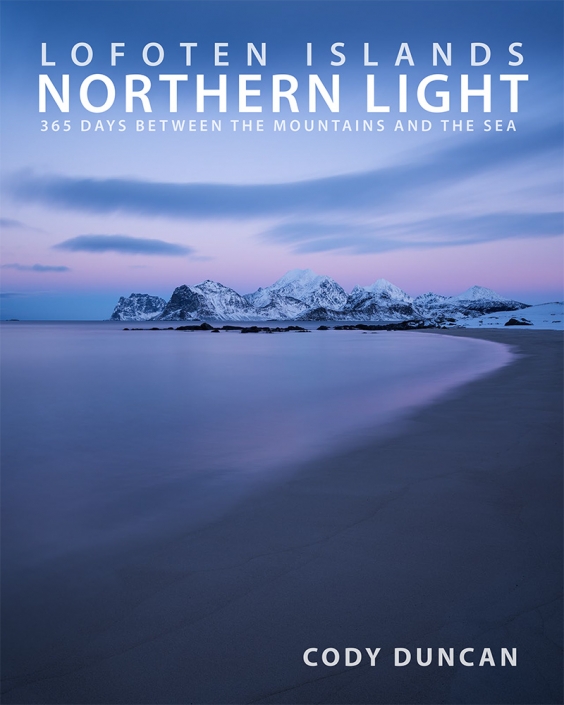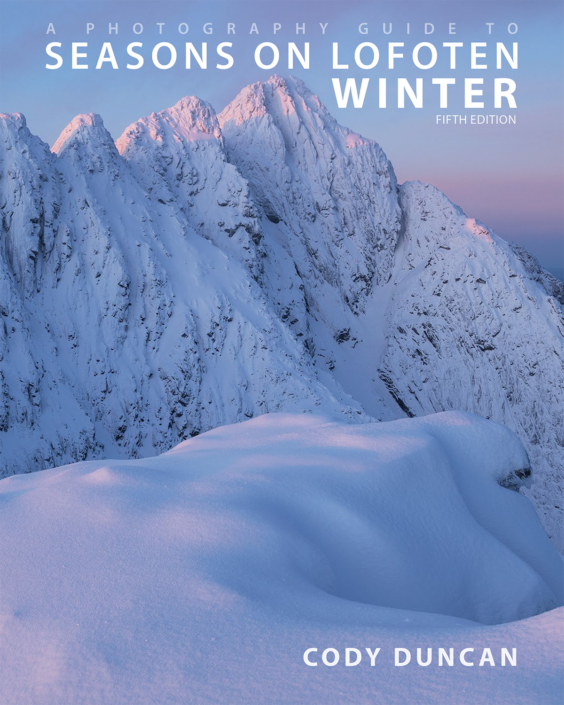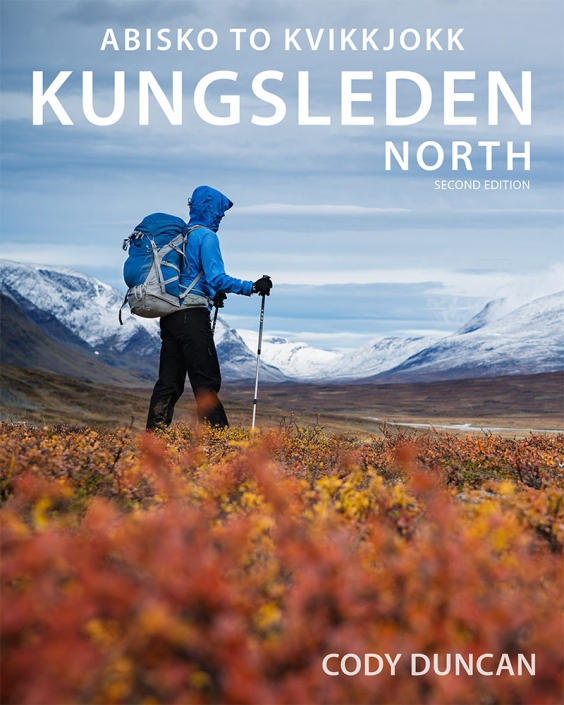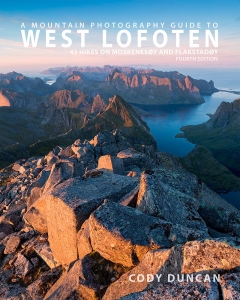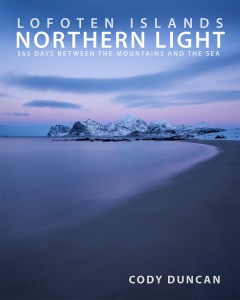SEASONS ON LOFOTEN
WINTER
NOVEMBER – MARCH
Polar night
December 9th – January 4th.
Winter on Lofoten is a delicate balance between snow and rain. Or, as I like to say, Lofoten looks colder than it actually is (most of the time!). If you are traveling to Lofoten for the ‘winter look’ of the islands, then mid January to late March is the best period. Before the new year, the weather is too inconsistent, it might snow or it might just rain. With January, more reliable winter conditions arrive, but not always! It can be 6˚C and raining for a week at any time, and typically there is some fluctuation between above and below freezing temperatures on a regular basis.
December is the darkest month of the year on Lofoten. Unless you’re going to experience the polar night, I’d say skip it, as conditions aren’t consistent enough. November is often dark and rainy, perhaps the worst month of the year to visit. January is dark with the sun barely rising above the horizon in the first half of the month, but the light is simply amazing; a continuous sunrise to sunset which lasts for 2-4 hours. Winter conditions also become more reliable in January, making it a good month to experience the winter atmosphere on Lofoten.
The days grow longer in February, though the sun still remains quite low on the horizon until the middle of the month. It’s a good mix of short days and long nights, providing enough time to get to separate locations for sunrise and sunset and a few other things at midday. By March the days begin to feel normal in length at the sun is relatively high in the sky; the long nights of the arctic winter are now gone. There will still be plenty of snow around and the sun will start rising more to the east and setting in the west. March is a good month if you want an active trip to the islands: climbing, skiing, etc.
By April the islands are beginning to thaw out. Winter storms and snow flurries often blow through, but in the long days the snow begins to disappear from the lower elevations as winter loses its grip over the land. April can be a bit drab for certain landscapes as the grass is brown and matted, and the trees are still leafless and barren as they await the arrival of spring. The nights grow short by the end of the month with a true darkness never occurring, giving the sense that summer is just around the corner. These twilight nights of late April, on the edge of the coming of the midnight sun, provide some fantastic light and leave little time for you to sleep as you will want to be shooting until 5:00am most nights.
Don’t expect to find much, if anything, open tourism wise during the winter months. Even finding a coffee can be a bit of a challenge in some places. On the bright side, the temperature never gets too cold for such a wintry looking destination; you should be prepared for somewhere down to -10˚C or so. However, it is the wind that can really suck the heat out of you. Bring warm, windproof clothing and a good pair of gloves as you won’t produce much heat just standing around and taking photos. You don’t want to have to stop shooting because you’re cold. Another nice thing about winter is you can sleep in until 9:30am and still be up for sunrise!
It is best to have a shelter of some sort, you will miss out on 90% of Lofoten if you don’t have a way to drive yourself around. Plus, waiting 2 hours for a bus at 7am can really be a miserable, character forming experience. Before moving to Lofoten, I often couldn’t afford both accommodation. On those trips I would typically sleep in my rental cars all but a night or two when I need to charge my camera batteries. A weekly shower doesn’t hurt either. It can be a bit drafty at times, but I’m glad I have something sturdy to sleep/wait in as on more than a few nights over the years, even a 4-season tent would have had its work cut out for it.
Winter sunrise – sunset times
Jan 1: No sunrise/sunset
Jan 15: 10:45 – 13:45
Feb 1: 9:27 – 15:12
Feb 15: 8:27 – 16:14
Mar 1: 7:24 – 17:13
Mar 15: 6:25 – 18:06
Photographer’s perspective
If you’re wanting to photograph the islands in winter condition then January to March is the best time. If you’re poor like me and have to camp or sleep in your rental car, than January can be a bit rough. But when you get a good day, the light is simply amazing and you’ll be going non stop from dawn till dusk – which isn’t so bad as it’s only about 4 hours. February brings a few more hours of daylight, and thus more time to work and get to a few different locations. Even at noon in February, the sun is not very high in the sky so it’s no problem to photograph throughout the day. In March the islands are still fully embraced in winter, yet the days are long enough to head out into the mountains for a few adventures. Though I feel that the light loses some of the magic that is present in January and February.
Sunrise occurs roughly 30 minutes earlier as each week passes, so don’t forget to adjust your alarm forward every few days.
If making your first visit to the islands for winter, then I’d say February or March would be the best months for somewhat reliable conditions.
SPRING
APRIL – MAY
Spring in the traditional sense of flowers blooming in green fields doesn’t really exist for Lofoten. As the days grow long at the beginning of May, the islands turn from brown to green seemingly overnight. In reality, it is more like a two week process as the green creep from the coastal areas higher into the mountains, but it is amazingly fast nonetheless. So if thinking of Spring in a continental way, it lasts a week or two. From a light perspective however, these weeks prior to the arrival of the midnight sun on May 26th can provide some beautiful hours of twilight all night long.
Spring is still cold on Lofoten, and coastal snow can still fall at the end of May, though with the sun now high in the sky, most fresh snow disappears quickly. On warmer days, the waterfalls can really be flowing off the mountains as the remains of the winter’s snow melts away.
If hiking is your goal, there is still significant amounts of snow in most inland mountain areas, making hiking difficult in many locations. Coastal areas should see snow free trails up to 600 meters or so by mid May.
Spring is also a period of rockfall and avalanches on Lofoten, so extra caution needs to be taken when hiking, and some routes should be avoided all together. Even the E10 near Flakstad experienced two significant rockfall events in April and May 2016, the 2nd of which closed the road for several days.
Photographer’s perspective
I don’t really think of Lofoten as a spring destination. The main draw of this time of year will be the twilight nights in combination with more dramatic and wintry weather then is found at the end of summer. If it hasn’t rained for a day or two though, the islands can have a bit of a drab or flat look to them, leaving seascapes as the best option for shooting.
SUMMER
JUNE – AUGUST
Midnight sun
May 26th – July 17th
Summer is the time when the islands turn a brilliant green (thanks to the abundant rain), flowers cover fields and hillsides, and the sun doesn’t set for nearly two months. The summer months are also the main tourist season and the roads will be filled with motorhomes from the continent and the campgrounds dotted with tents. To get the most out of the islands, summer is the best. And most of all, you never have to worry about being out too late, as ‘late’ doesn’t really exist. You can leave your headlamp at home, it won’t be needed.
Snow typically hangs around on a few peaks into June. By July the islands will be green and lush. The weather tends to mellow out a bit in summer, but a good wind can still present itself as I found out camping at Bunes beach one night and had to set up my tent behind an old lady’s cabin. If you’re lucky, you can have several days on end of blue sky and light winds, but I often find summers to be gray and dreary on many days, the weather lacks the dynamic nature found during the rest of the year and just kind of sits over the islands. A week straight of a misty gray sky is not an uncommon occurrence, oftentimes leaving me frustrated that my camera just sits in my backpack. And then that brilliant day occurs and all the gloom is forgotten, though my shoes are probably still wet…
If you are planning on staying in any type of rorbu or hotel, you should begin booking by early winter, especially for July, when accommodation across Lofoten literally reaches 100% occupancy. This unfortunately takes away from the flexibility or spontaneity of travel, which I think is the best way to experience Lofoten; go where the weather is nice. Luckily, by mid August, the islands are still in full summer but the summer crowds have largely returned south, allowing for a bit more last minute planning.
Photographer’s perspective
I’d say skip June and head over in mid July. My reasoning is that the sun never sets in June, thus you have daylight for the whole month. While this is a surreal experience that I enjoy hiking the mountains in, it is always what I’m looking for as a photographer. If you have two weeks, sometime around July 10-14 would be a good starting time as you still get a few days of midnight sun and then experience the 2-3 hour twilight nights that occur towards the end of July and beginning of August. This is my favorite time to be out wandering around early into the morning and I tend to just stay up for sunrise and then head to bed around 4am or so.
AUTUMN
SEPTEMBER – OCTOBER
The days become noticeably short in September and a briskness returns to the air. The rainiest time of the year on Lofoten, storms sweep across the islands on most days. By the end of September or early October snow should have returned to the mountain peaks and the sidewalks might begin to ice over at night. The grass turns golden and the mountain birch trees shine brightly in the sun. Autumn is perhaps the most beautiful time on the islands. The weather can be frustrating at times, but the storms often bring dramatic, changeable light throughout the days. By late August the northern lights should also be making their return to the night sky, so even though the sun of summer is gone, sleep can still be elusive at times.
Photographer’s perspective
While I love Autumn color, and the Lofoten Islands are a beautiful place for it, there is also a fair amount of unpredictability. Namely, if a gale comes early in the season as the trees are beginning to turn, they will be largely stripped bare of leaves for the most part. I’m not a big fan of barren trees without a wintery/snowy look, so this can leave the islands somewhat drab looking and reminiscent of April or early May. The light is still amazing and the grass and small foliage will still be colorful, it usually forces me to focus more on beaches or other areas where I can keep trees out of my images.
As the area around Abisko national park in Sweden hits peak color a few weeks before Lofoten, it can be a good option to start here and follow the color west towards Lofoten. This will give you a bit more time and differences in weather to hopefully track down some nice color. And as weather can be quite localized, if Lofoten gets blown out, there is always the possibility of heading up to Vesterålen – though Vesterålen tends to be a windier location than Lofoten.
The main thing in Autumn is to try and remain flexible with your schedule and open to changes.
Ebooks – Seasons On Lofoten
For travel and photo guides to Lofoten, checkout my Seasons on Lofoten series of Ebooks – currently summer and winter versions available. Each Ebook is a season-specific guide to Lofoten, providing an overview of what to expect when visiting the Islands.

